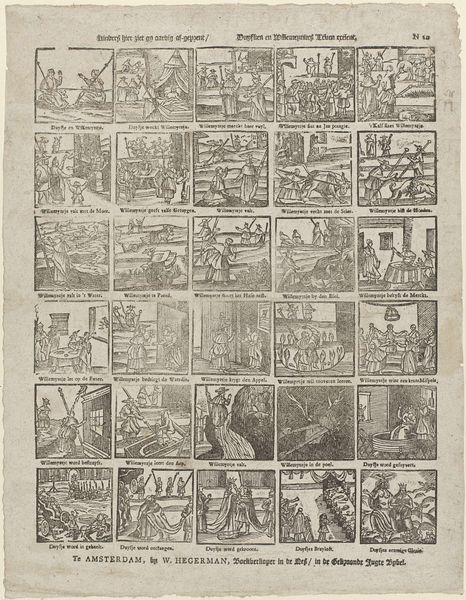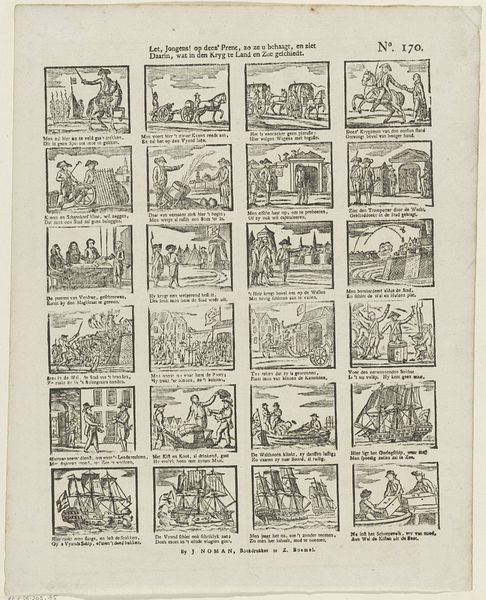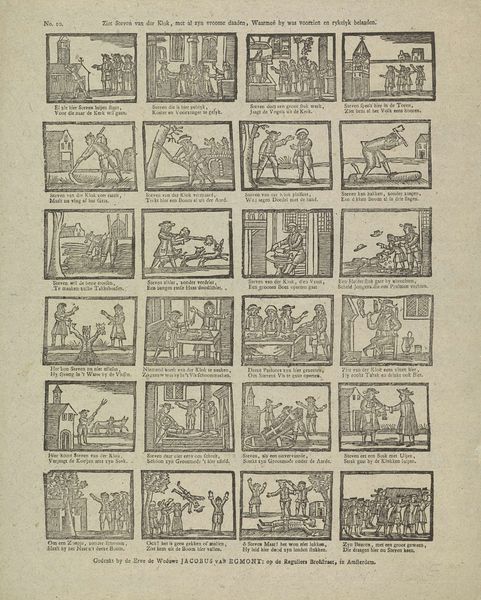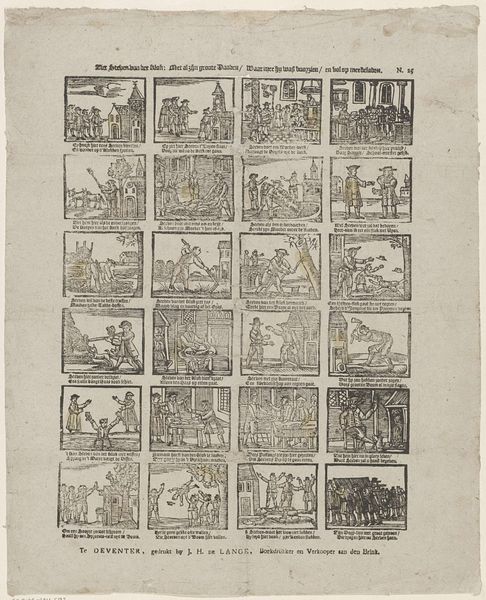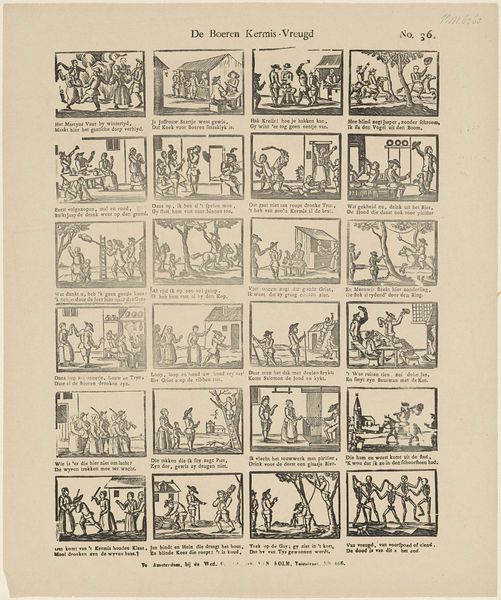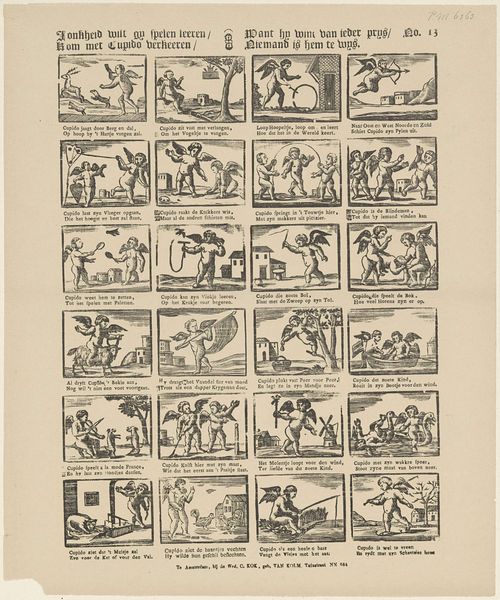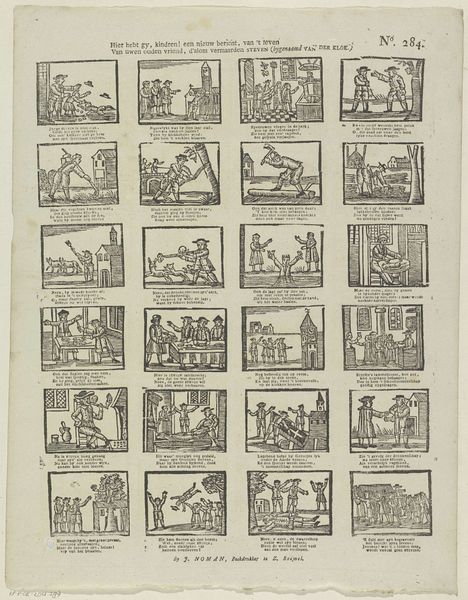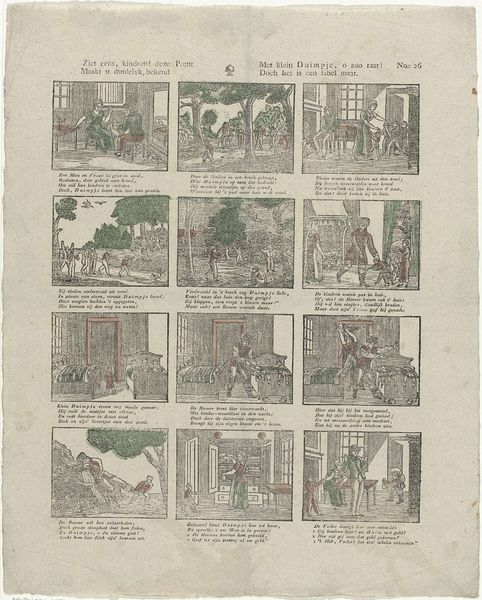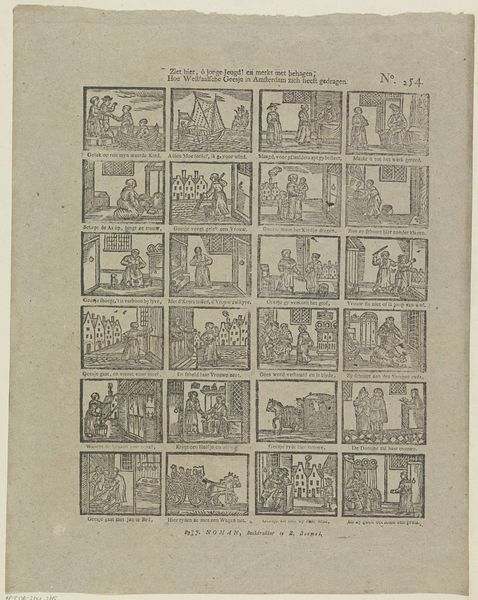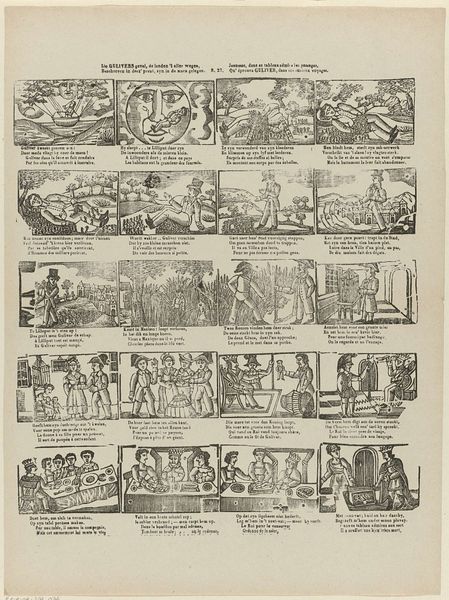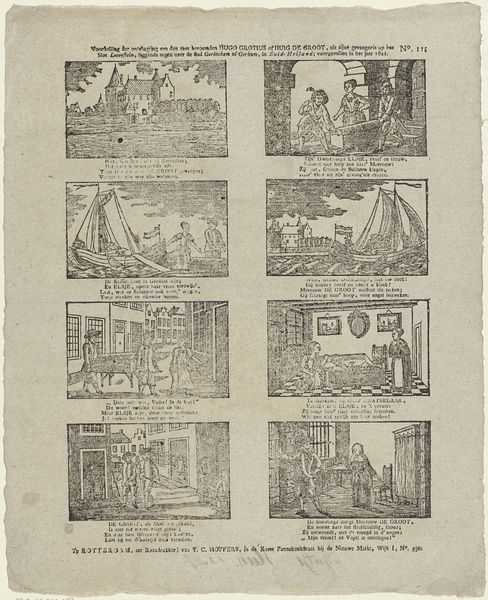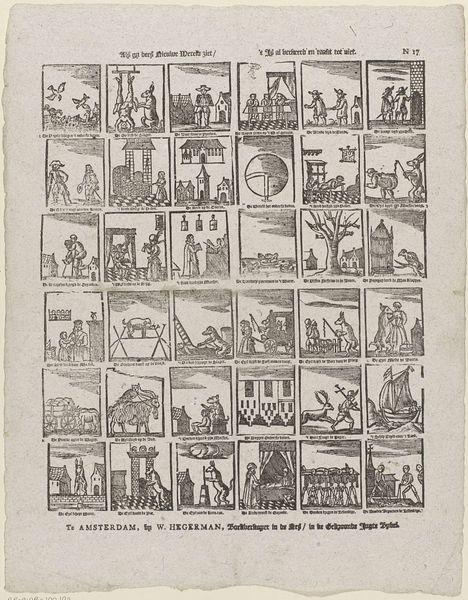
graphic-art, print, engraving
#
graphic-art
#
comic strip sketch
#
aged paper
#
narrative-art
# print
#
old engraving style
#
sketch book
#
personal sketchbook
#
history-painting
#
engraving
Dimensions: height 307 mm, width 385 mm
Copyright: Rijks Museum: Open Domain
Curator: Here we have a print entitled "Het leven en bedryf van Cartouche," or "The Life and Deeds of Cartouche," dating from 1761 to 1804 and attributed to Erven de Weduwe Jacobus van Egmont. Editor: My immediate impression is that it reads like a moralistic cartoon strip. Each frame meticulously rendered, but there’s an inescapable bleakness in its grays and blacks. The aging paper contributes, no doubt. Curator: Indeed, the arrangement of scenes into a linear narrative speaks to its function as popular entertainment—akin to a proto-comic book. We see, presumably, pivotal moments in the life of Cartouche, presented as discrete narrative units. What strikes me, from a formal perspective, is the consistent use of tight framing in each panel, heightening the claustrophobia. Editor: Cartouche himself becomes a kind of symbol, doesn't he? He clearly represents rebellion, criminality...perhaps even a warped version of justice in an unjust world. His exploits seem glorified yet simultaneously condemned by the inclusion of didactic, moralistic verse within the frames. It is not about just a life, but the message the life contains for its audiences. Curator: I agree that Cartouche acts as a signifier—his entire figure saturated with meaning that's mediated through the structure of the panels themselves. The high contrast reinforces stark divisions: order versus chaos, light versus dark. One can also look to the distribution of text relative to image, where it performs as an extrinsic tool and integral component. Editor: Consider also how recurring images of weapons, money, and incarceration amplify this message about choice and consequence. I would even go further, positing the entire composition itself as an allegory for societal control; Cartouche becomes the scapegoat of an increasingly corrupt time, rendered for public consumption. The symbolism operates both consciously and unconsciously, impacting perception. Curator: Fascinating analysis. By focusing on recurring visual motifs and narrative structuring, your semiotic reading illuminates an interpretive lens not readily apparent on first viewing. This artwork showcases graphic media operating on the intersection between narrative, morality, and popular imagery in the Dutch Golden Age. Editor: By focusing on recurrent icons such as coins, keys, weapons, and gates that reinforce a universal awareness of consequence, and how these elements serve as indicators for a far more universal interpretation of the consequences that inform morality.
Comments
No comments
Be the first to comment and join the conversation on the ultimate creative platform.
